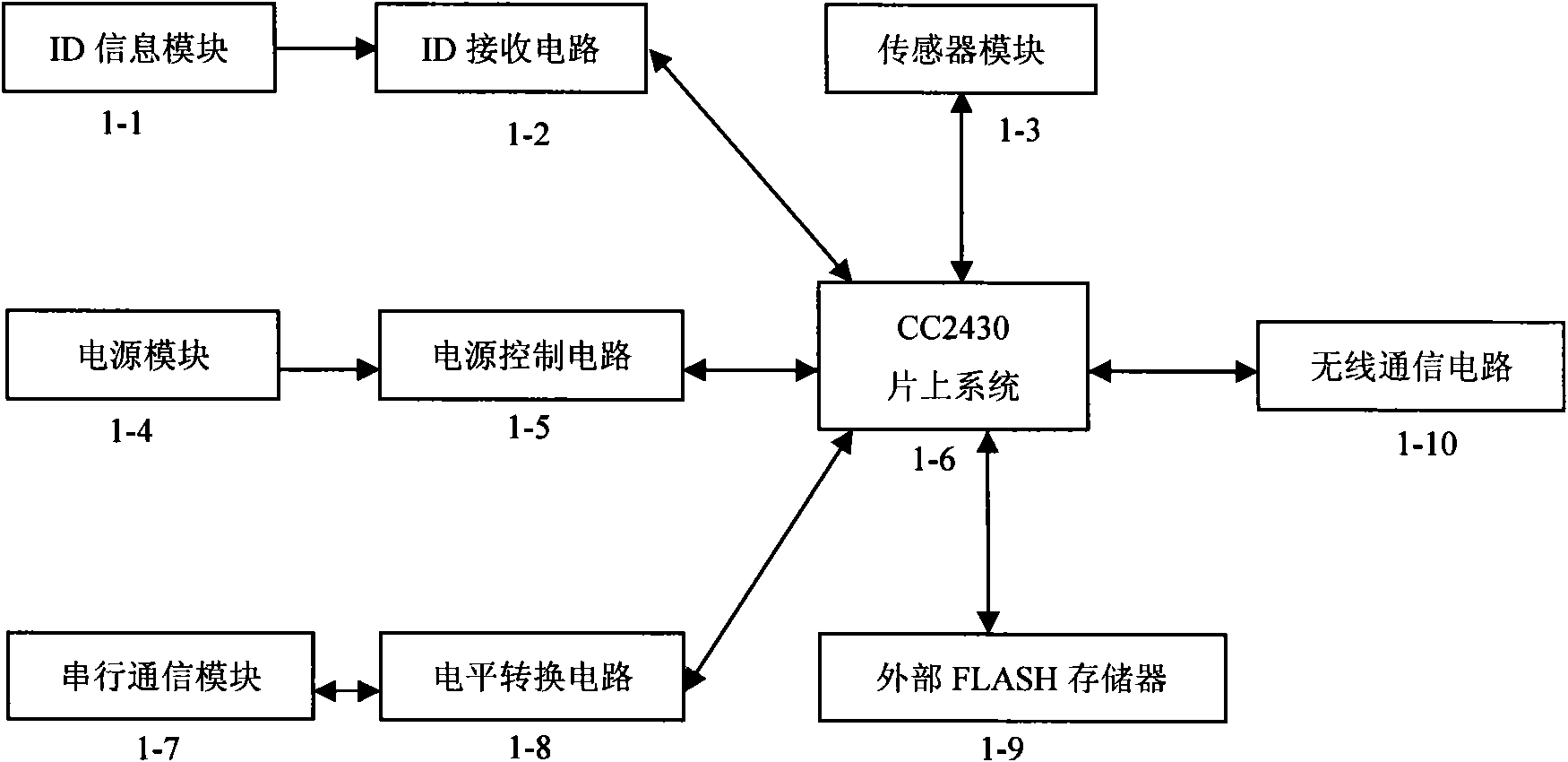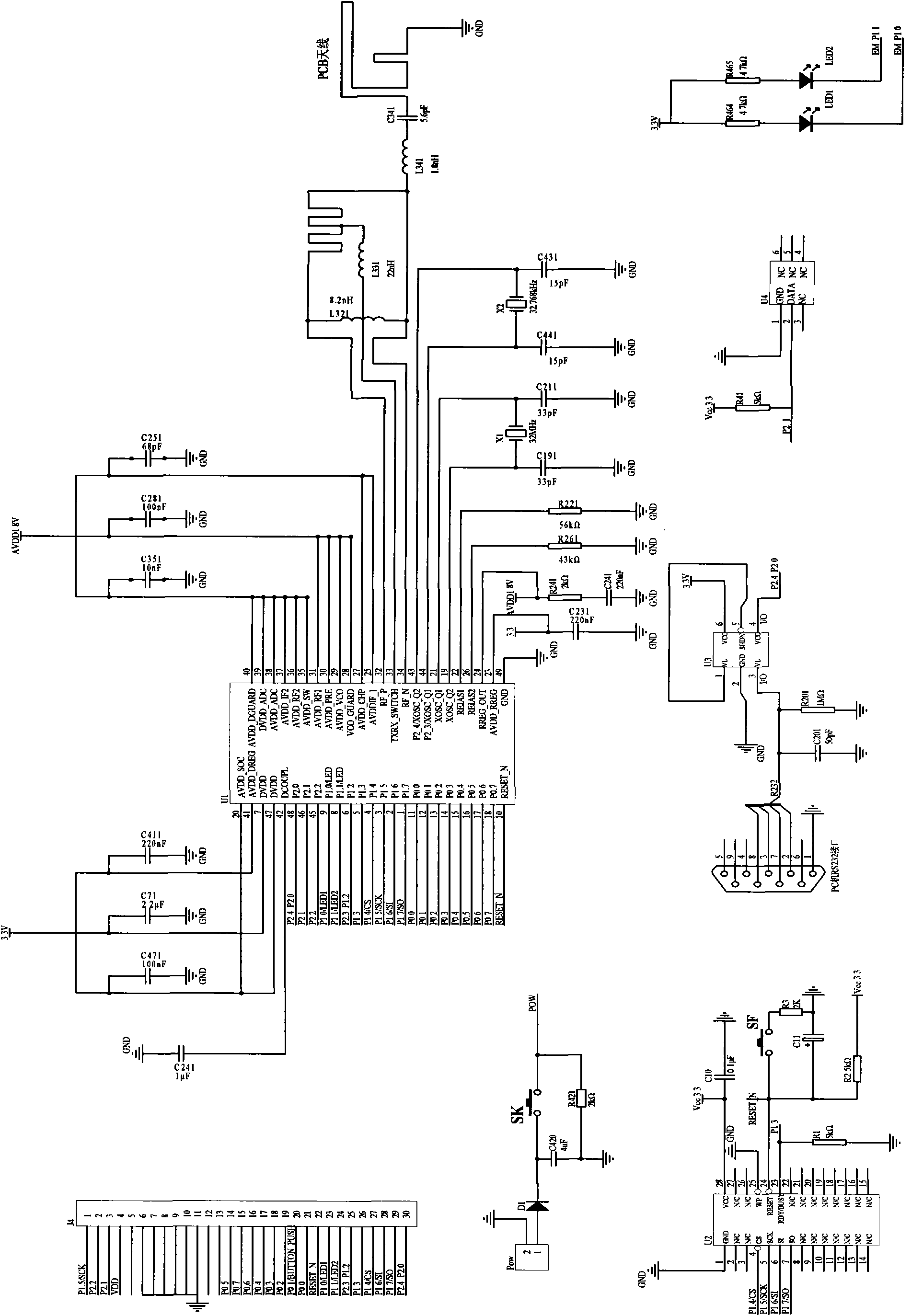Wireless sensor network node device used in underground coal mine
A wireless sensor and network node technology, applied in mining equipment, network topology, wireless communication, etc., can solve the problems of personnel discontinuity, location leakage area, and low positioning accuracy, so as to prolong the life cycle, improve reliability, and locate high precision effect
- Summary
- Abstract
- Description
- Claims
- Application Information
AI Technical Summary
Problems solved by technology
Method used
Image
Examples
Embodiment 1
[0021] Embodiment 1: The coal mine underground wireless sensor network node equipment has a wireless sensor fixed node 1 and a wireless sensor mobile node 2, the fixed sensor node 1 is placed on the wall of the coal mine underground roadway, and one is placed at a certain distance, and the mobile sensor node 2 is worn on the On the underground personnel, it moves with the movement of the underground personnel.
[0022] The wireless sensor fixed node 1 consists of a fixed ID information module 1-1, a fixed ID receiving circuit 1-2, a fixed sensor module 1-3, a fixed power supply module 1-4, a fixed power supply control circuit 1-5, and a fixed CC2430 on-chip System 1-6, fixed serial port communication module 1-7, fixed level conversion circuit 1-8, fixed external FLASH memory 1-9, fixed wireless communication circuit 1-10, fixed ID information module 1-1 receives through fixed ID The circuit 1-2 is connected with the fixed CC2430 SoC 1-6; the fixed power module 1-4 is connected...
PUM
 Login to View More
Login to View More Abstract
Description
Claims
Application Information
 Login to View More
Login to View More - R&D
- Intellectual Property
- Life Sciences
- Materials
- Tech Scout
- Unparalleled Data Quality
- Higher Quality Content
- 60% Fewer Hallucinations
Browse by: Latest US Patents, China's latest patents, Technical Efficacy Thesaurus, Application Domain, Technology Topic, Popular Technical Reports.
© 2025 PatSnap. All rights reserved.Legal|Privacy policy|Modern Slavery Act Transparency Statement|Sitemap|About US| Contact US: help@patsnap.com



